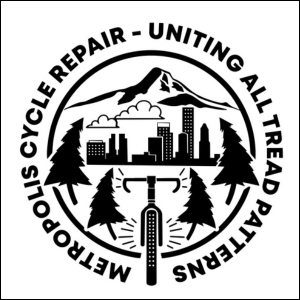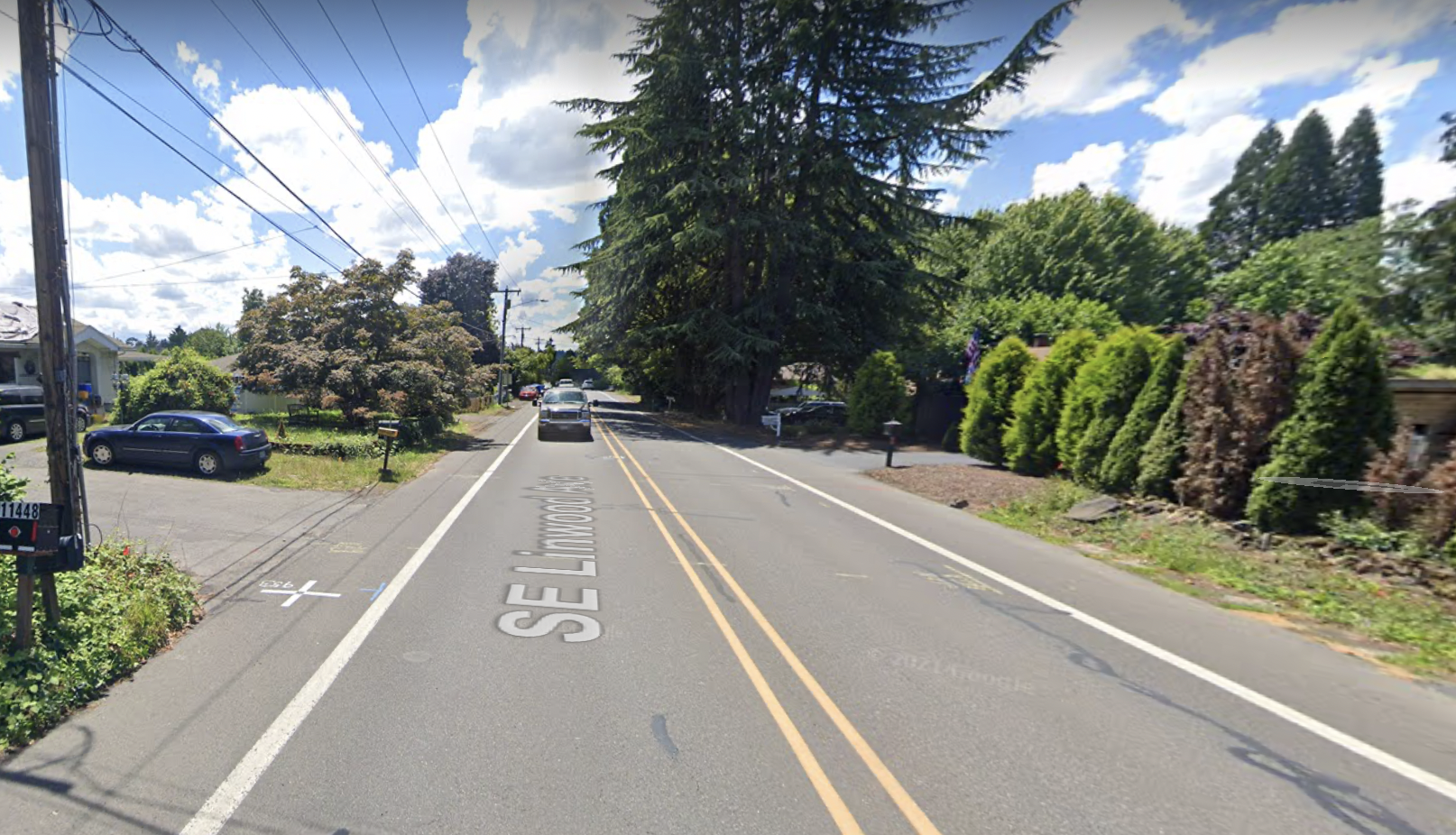
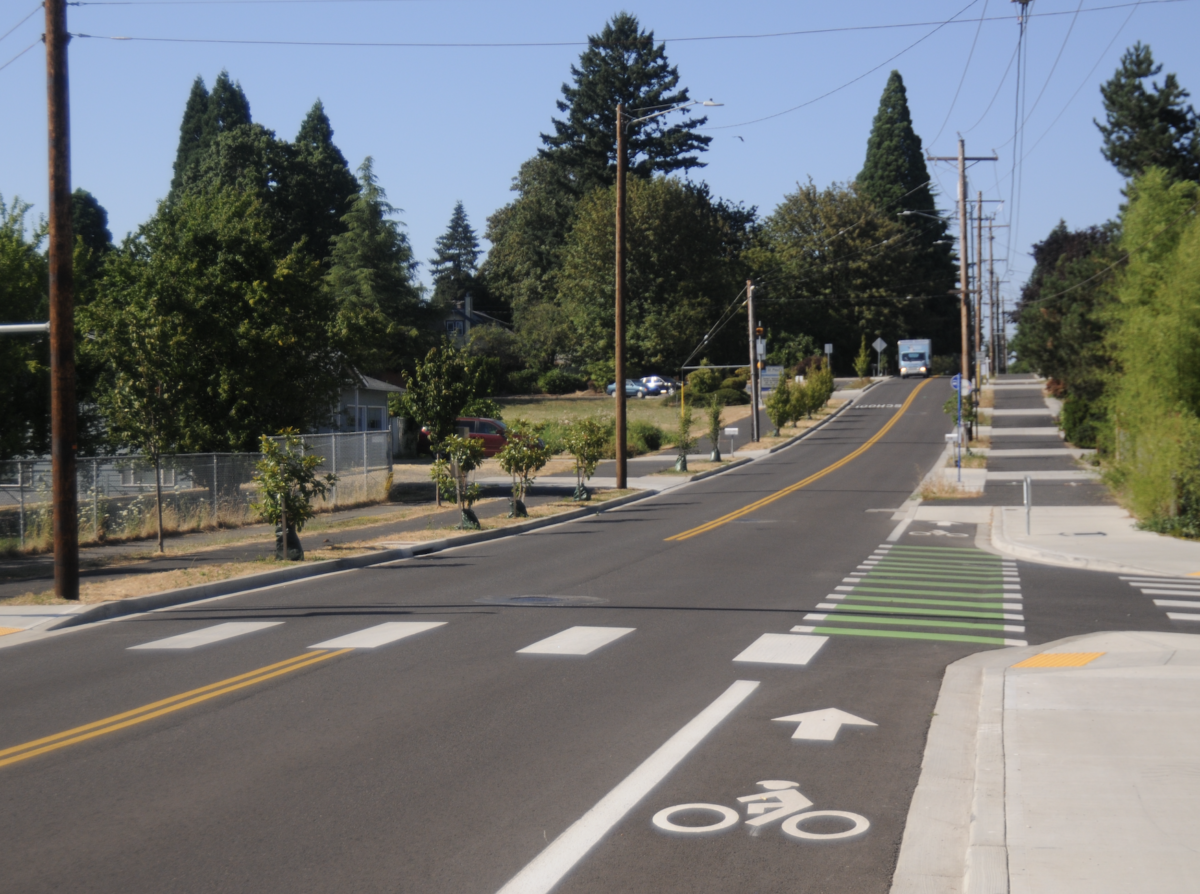
With all of Portland’s bike infrastructure projects to discuss, exciting developments in our neighboring cities don’t always get the attention they deserve. With this in mind, I headed down to Milwaukie yesterday to check out the relatively new SE Linwood Avenue multi-use paths, and I was impressed by what I saw.
Linwood Ave is located in the easternmost part of Milwaukie about a mile and a half west of 82nd Ave. It’s a street with one vehicle lane in each direction, and while it isn’t an extremely busy corridor by Portland standards, it’s one of only a few streets that goes straight from Johnson Creek Blvd to SE Railroad Ave/Harmony Road. The 10-foot wide multi-use paths, which debuted last November, are located on both sides of the street, and have enough room for people walking and biking to share the path.
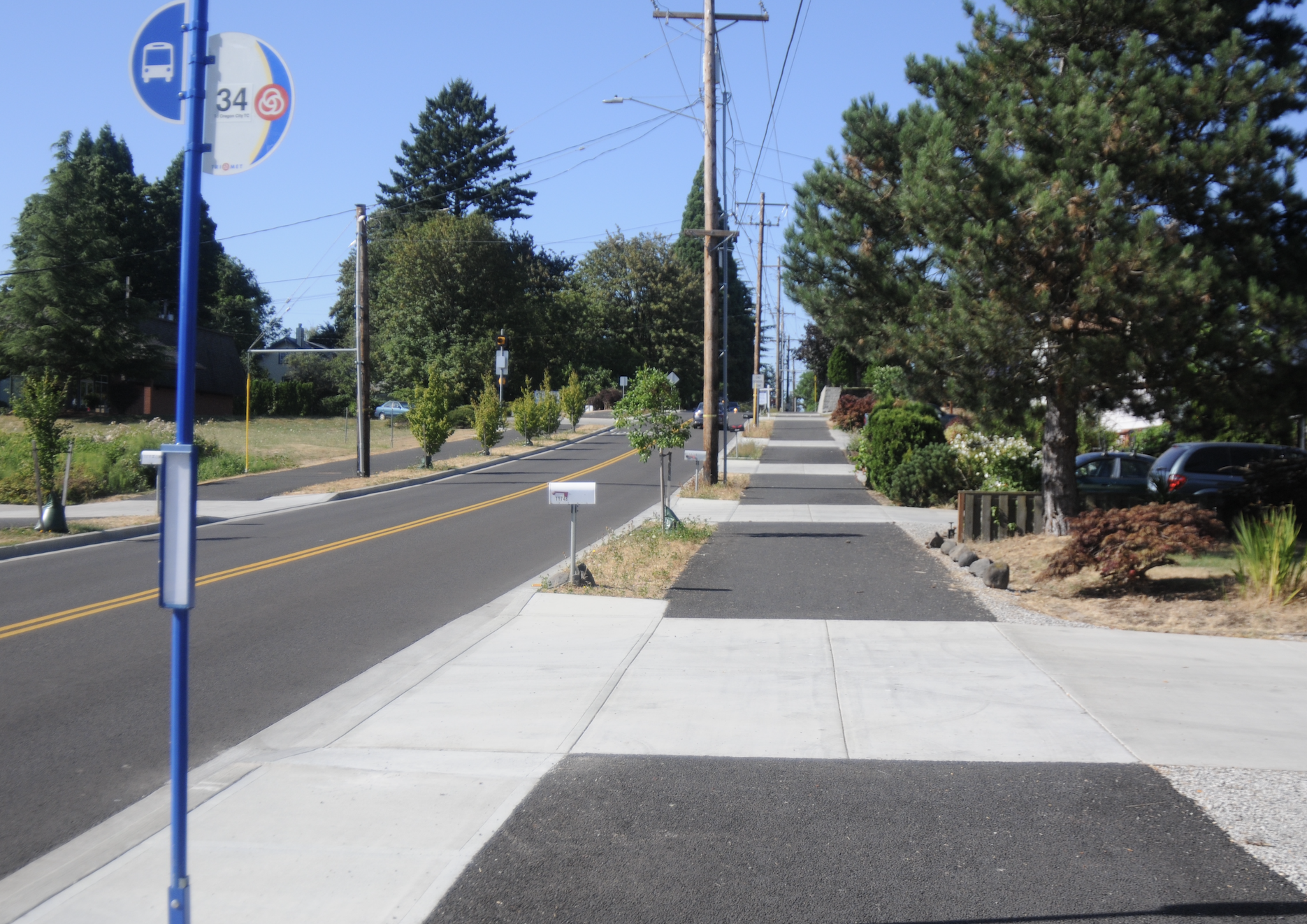
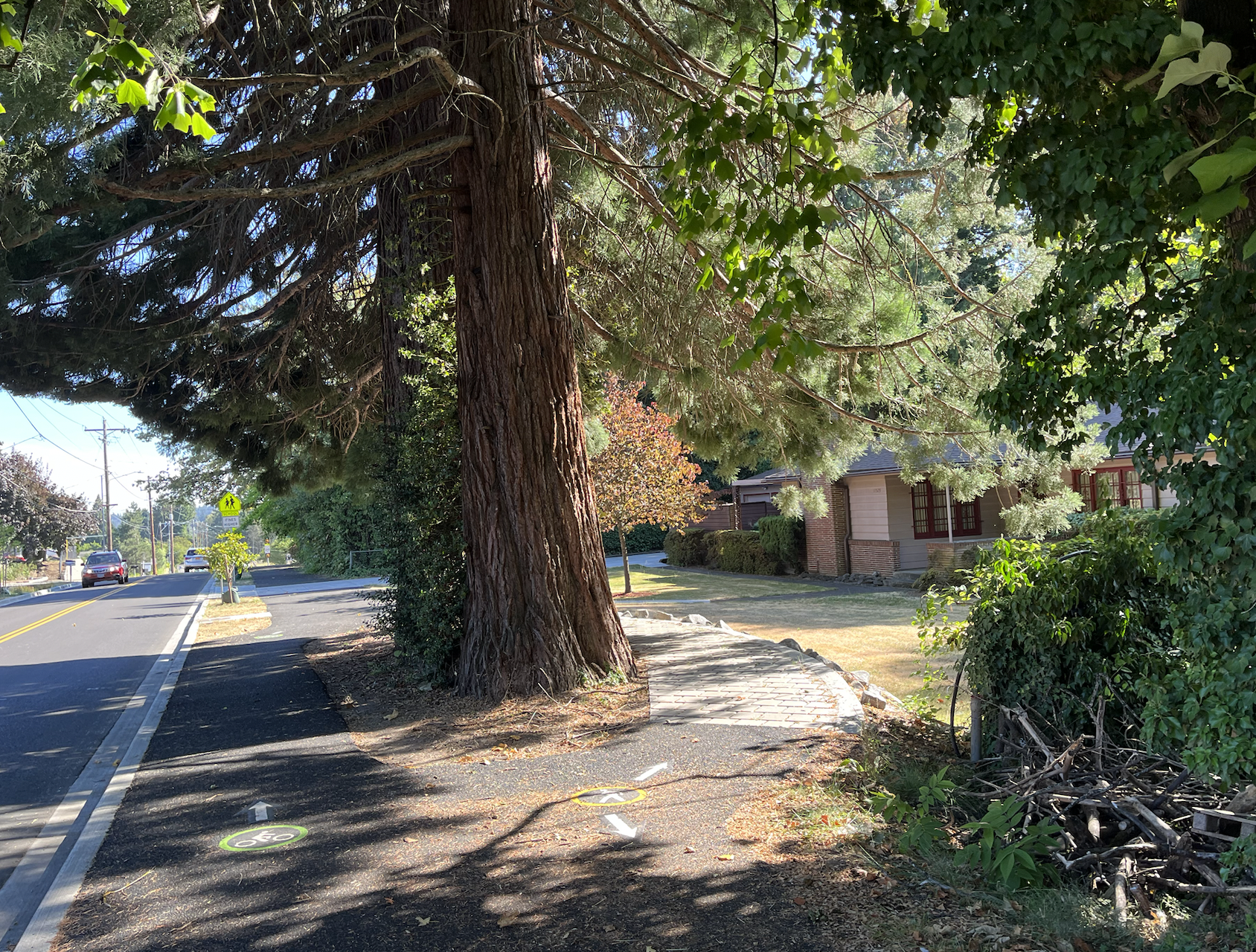
This $3.3 million project was partially funded by Milwaukie’s Safe Access for Everyone (SAFE) program, which aims to improve safety for people using active transportation in the city. The city also received a grant from the Oregon Department of Transportation’s Safe Routes to School (SRTS) program to build the paths on Linwood Ave, which is home to Linwood Elementary/Sojourner School. The SRTS program is intended to get kids and parents using active transportation to get to school instead of driving, and projects like this one can make all the difference for people wary about their kids biking or walking to school.
From Johnson Creek Blvd at the exit of the Springwater Corridor Trail to SE Monroe Street, SE Linwood Ave does not feel like a safe place for people biking. There is a small bike lane on the side of the road with nothing but a thin line of paint separating people biking from adjacent car traffic, and the lane is uneven with grates and cracks in the pavement. In contrast, the multi-use path from Monroe Street to Harmony Road is smooth, wide and physically protected from car traffic with planting strips and trees.
This is the main problem with the Linwood Ave path: it’s less than a mile long. The stretch of street it’s located on is home to a school, a community garden and several churches, and it’s great that there is now a safe way to walk and roll right up to those places. But a lovely new path only does so much if it’s isolated in a neighborhood of otherwise dangerous streets.
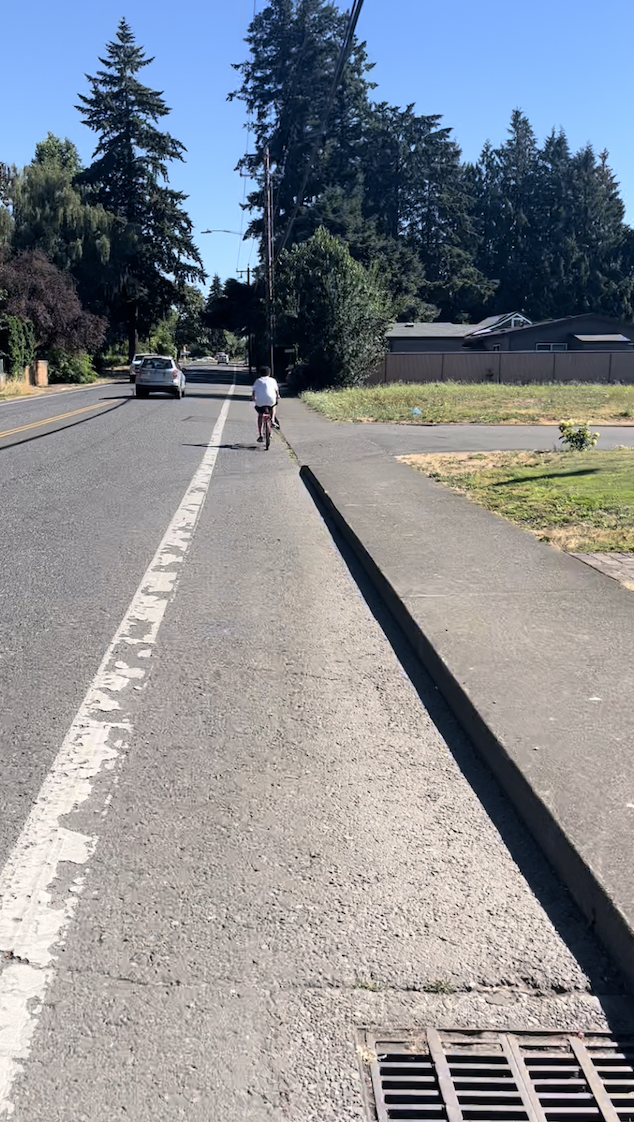
I saw this play out on my ride. There were several kids running a lemonade stand on Linwood just north of the start of the path, where the bike facilities are negligible. I asked them if they use the new path, and they said yes and that they feel safer and more comfortable on it than other parts of the street. I saw a boy biking from the north to get the the lemonade stand to see his friends, and it made me nervous to see him riding in such a thin, unprotected bike lane.
I also saw a long line of cars idling in a pickup line at Linwood Elementary, spilling out onto the street. While old driving habits die hard and it might take more than a path to convince people to stop driving to school, I think people would be more inclined to use the path if it extended out further. A seamless transition from the Springwater Corridor trail to this path would be great, and would mean people could very well get from northern and western parts of Milwaukie without spending very much time on a street at all.
There is a Clackamas County project on the books to extend this path all the way up to the Springwater Corridor trail. Because Linwood north of Monroe is technically located in Southgate CPO, an unincorporated part of Clackamas County, the county has jurisdiction over this part of the street. However, although this project was planned for completion by November 2022, construction has still not begun.
Steve Adams, the Milwaukie city engineer who worked on this project, told me the “main reason the city constructed this path way was to encourage parents and children to ride or walk to school,” and although he and other planners worked hard on the paths, he hasn’t seen them utilized very much since they opened.
“I certainly hope it takes off and becomes a new way for people to get around,” Adams said.


